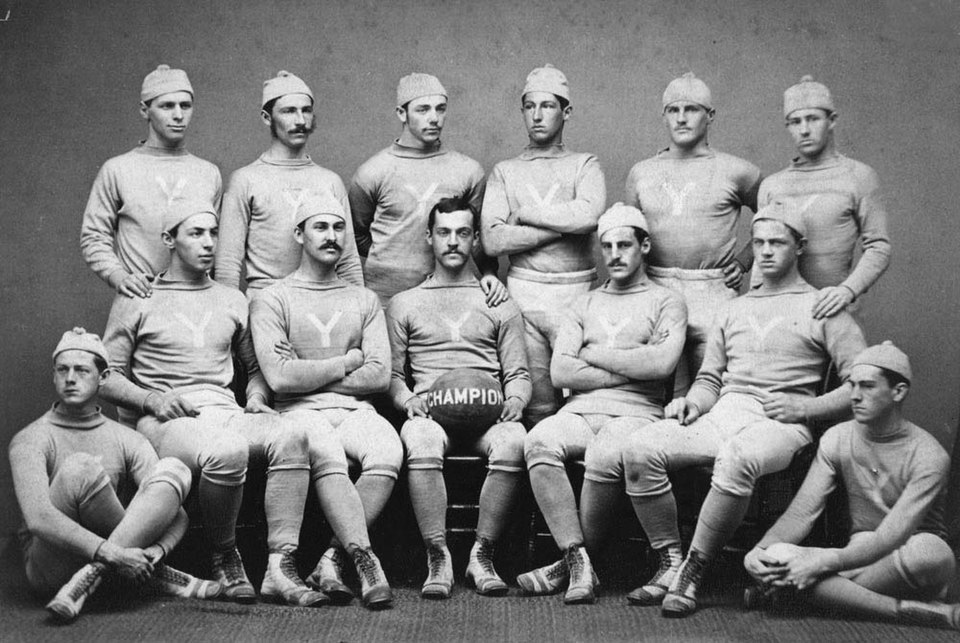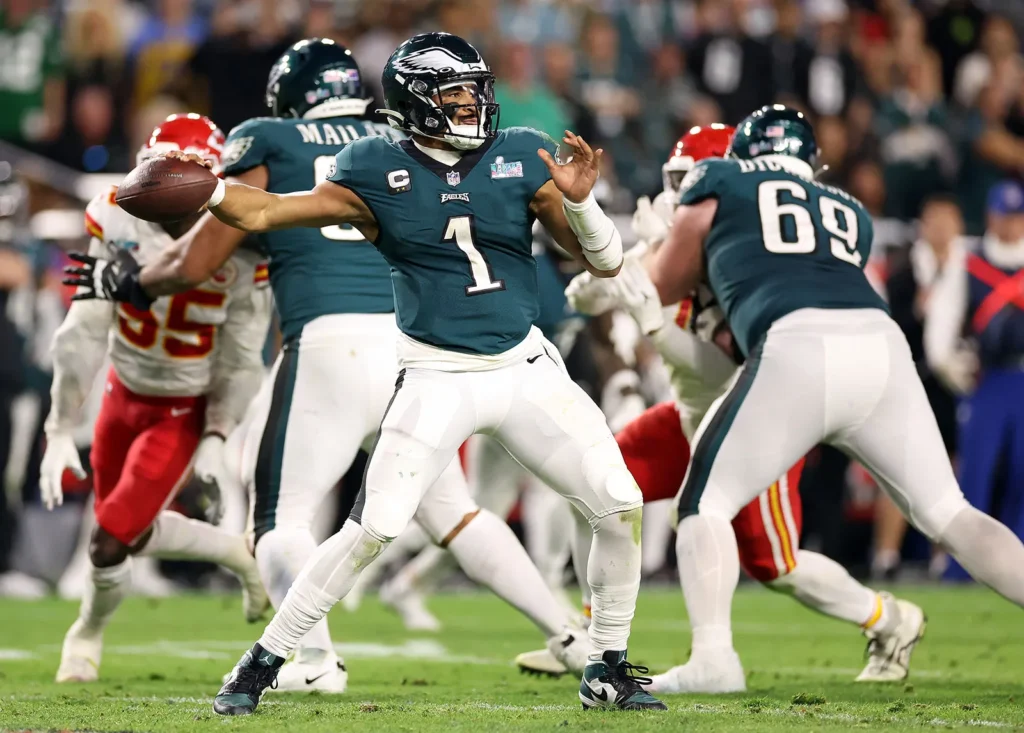American football is more than just a game — it’s a cultural cornerstone, a billion-dollar industry, and a source of fierce loyalty for millions of fans. But how did this iconic sport come to be?
In this article, we’ll explore the development of American football, from its humble beginnings to its present-day status as one of the most popular sports in the United States.
Early Beginnings: Football’s Ancestry in Rugby and Soccer
The story of American football starts long before the NFL or Super Bowl were even ideas. In the mid-19th century, students at U.S. colleges were already playing rough games that looked like a mix between rugby and soccer.
In 1869, the first official intercollegiate football game took place between Rutgers and Princeton. However, this game resembled soccer more than the football we know today. Over time, different colleges began experimenting with rule changes, leading to the birth of a new sport.
The Role of Walter Camp: The Father of American Football

No discussion about the development of American football is complete without mentioning Walter Camp, often referred to as the “Father of American Football.”
In the 1880s, Camp introduced several foundational elements to the game, including:
- The line of scrimmage
- The system of downs (originally 3 downs to gain 5 yards)
- The concept of 11 players per side
- The quarterback position
Camp’s changes transformed the chaotic rugby-style game into a more structured, strategic, and uniquely American sport. His influence laid the groundwork for the future growth of football in colleges and beyond.
The Rise of College Football
In the late 19th and early 20th centuries, college football exploded in popularity. Ivy League schools like Harvard, Yale, and Princeton dominated the sport and helped shape its rules and culture.
However, the game was extremely dangerous. By 1905, there were multiple fatalities on the field, leading President Theodore Roosevelt to demand reform. His intervention led to the formation of the Intercollegiate Athletic Association, which later became the NCAA.
Key rule changes followed, including:
- Legalization of the forward pass
- The introduction of the neutral zone
- Standardized playing fields and protective gear
These reforms not only made the game safer but also added excitement and innovation, further boosting its popularity.
The Birth of Professional Football
While college football thrived, professional football struggled to find its footing in the early 1900s. Teams were loosely organized, and games often lacked consistent rules and credibility.
That changed in 1920 with the founding of the American Professional Football Association, which would soon be renamed the National Football League (NFL).
In the early days, the NFL faced tough competition from college football and rival leagues. But through strategic expansion, standardized rules, and savvy marketing, it began to grow. Key moments included:
- Signing legendary players like Red Grange
- Broadcasting games on radio and later television
- Establishing a national championship format
By the 1950s, the NFL had become a serious entertainment force.
The AFL-NFL Merger and the Birth of the Super Bowl

In the 1960s, a new league — the American Football League (AFL) — emerged as a challenger to the NFL. The AFL introduced innovations like:
- Wide-open passing offenses
- More inclusive recruitment of African-American players
- A flashier, more modern image
Competition between the AFL and NFL culminated in the creation of a championship game — now known as the Super Bowl.
In 1970, the two leagues merged, forming one unified National Football League with two conferences: the AFC and NFC. This merger was a turning point in the development of American football and solidified the NFL’s dominance in the world of sports.
The Television Era: Football Goes Mainstream
Television changed everything. With the launch of Monday Night Football in 1970 and increasing national coverage, football became more than just a sport — it became a weekly event.
Major TV contracts brought in huge revenue, which funded:
- Larger stadiums
- Player salaries
- Advanced training and medical care
- Improved production value and fan experience
The Super Bowl became the most-watched TV event in the U.S., turning football into a cultural phenomenon with halftime shows, commercials, and millions of viewers around the world.
Innovations and Expansion in the Modern Era
In the 21st century, American football has continued to evolve with advancements in technology, strategy, and safety. Modern football features:
- Instant replay and video reviews
- Helmet technology and concussion protocols
- Fantasy football and sports betting integration
- Advanced analytics for play-calling and performance
The NFL has also expanded globally with games in London, Germany, and Mexico, proving that American football has international appeal.
College football has grown alongside it, with massive programs like Alabama, Ohio State, and Georgia developing NFL-ready talent and drawing huge crowds.
Social and Cultural Impact of American Football
Football has become woven into the fabric of American life. From high school Friday nights to college Saturdays and NFL Sundays, the game is everywhere.
It’s also been a platform for social change, with players like Colin Kaepernick, Pat Tillman, and Deion Sanders using their visibility to spark national conversations.
Football has also influenced fashion, music, movies, and even language. Terms like “Hail Mary,” “blitz,” and “red zone” are now part of everyday vocabulary.
The Future of American Football
As the NFL and college football continue to grow, so do the challenges and opportunities:
- Player safety and long-term health remain major concerns
- Women’s football leagues and flag football are gaining popularity
- Youth football programs are adapting to keep the game safe and inclusive
- Global expansion may bring American football to new continents and audiences
Technology, innovation, and social engagement will continue shaping the game for generations to come.
FAQ’s
1. Who is considered the founder of American football and why?
Walter Camp is widely regarded as the founder of American football for introducing key rule changes like the line of scrimmage, downs system, and 11-player teams, transforming rugby-style gameplay into the structured sport we know today.
2. How did college football influence the growth of the NFL?
College football laid the foundation for the NFL by popularizing the sport, shaping early rules, and producing talented players. The traditions and rivalries of college football helped build a passionate fanbase that later transitioned into professional football support.
3. When did the Super Bowl become a cultural event in the U.S.?
The Super Bowl started gaining national attention in the 1970s, but by the 1980s and beyond, it evolved into a major cultural phenomenon with halftime shows, celebrity performances, and record-breaking TV viewership every year.
4. What impact did the AFL-NFL merger have on American football?
The 1970 AFL-NFL merger unified two rival leagues, expanded the game’s reach, and introduced the modern AFC-NFC conference system, setting the stage for today’s NFL and the creation of the iconic Super Bowl.
5. How has technology changed the way American football is played and watched?
Technology has transformed football through instant replay, player tracking, injury prevention tools, and global live-streaming. Fans now enjoy real-time stats, fantasy football, and immersive viewing experiences on digital platforms.
Final Thoughts: The Ever-Evolving Legacy of Football
The development of American football is a story of constant evolution — from muddy fields at Ivy League schools to billion-dollar stadiums and international broadcasts. It’s a game built on tradition, strategy, and community. As football continues to evolve, one thing remains the same: its ability to unite fans, inspire athletes, and capture the spirit of competition like no other sport in America. Whether you’re a longtime fan or just getting into the game, the journey of football is far from over — and the best may be yet to come.



